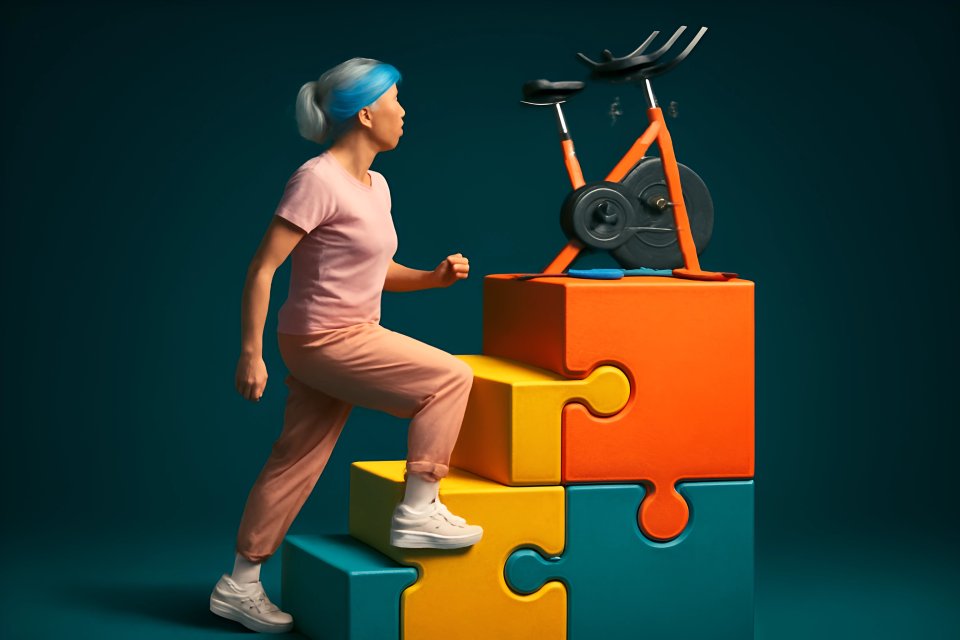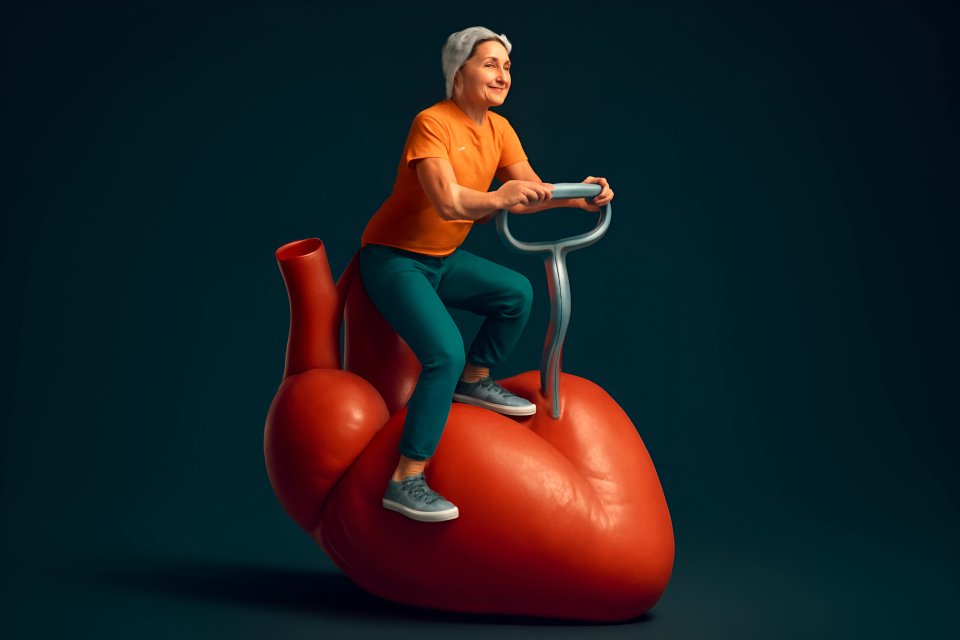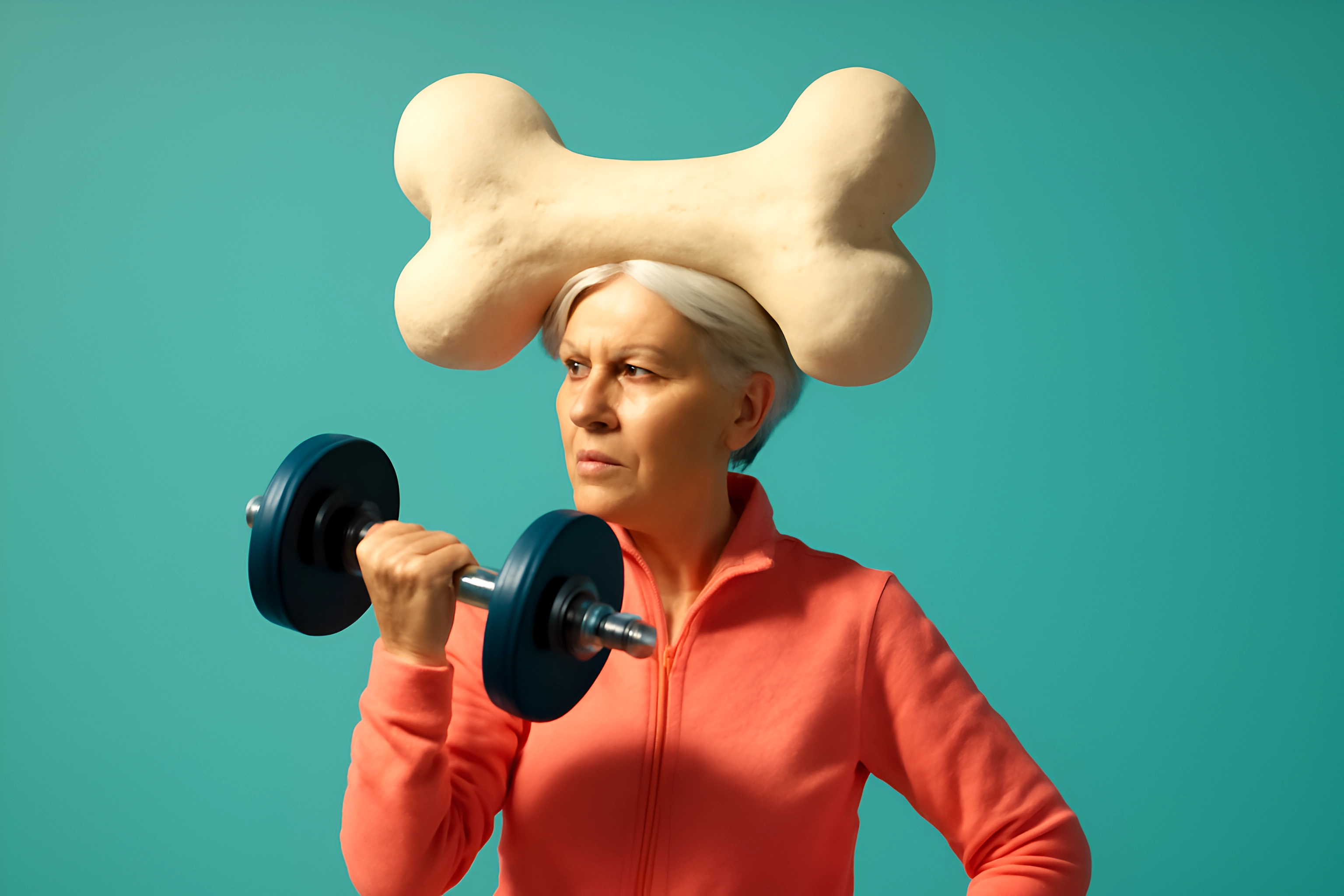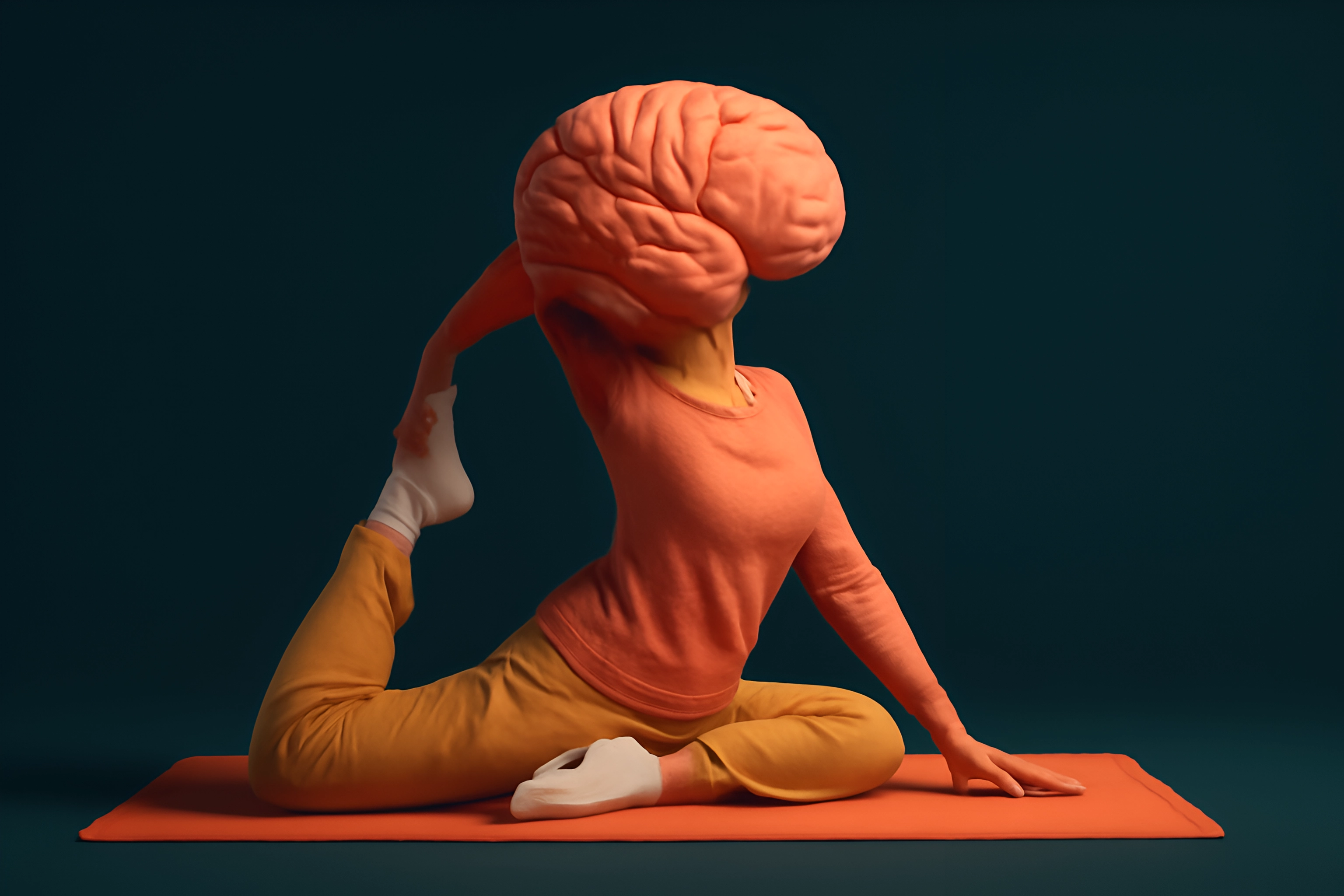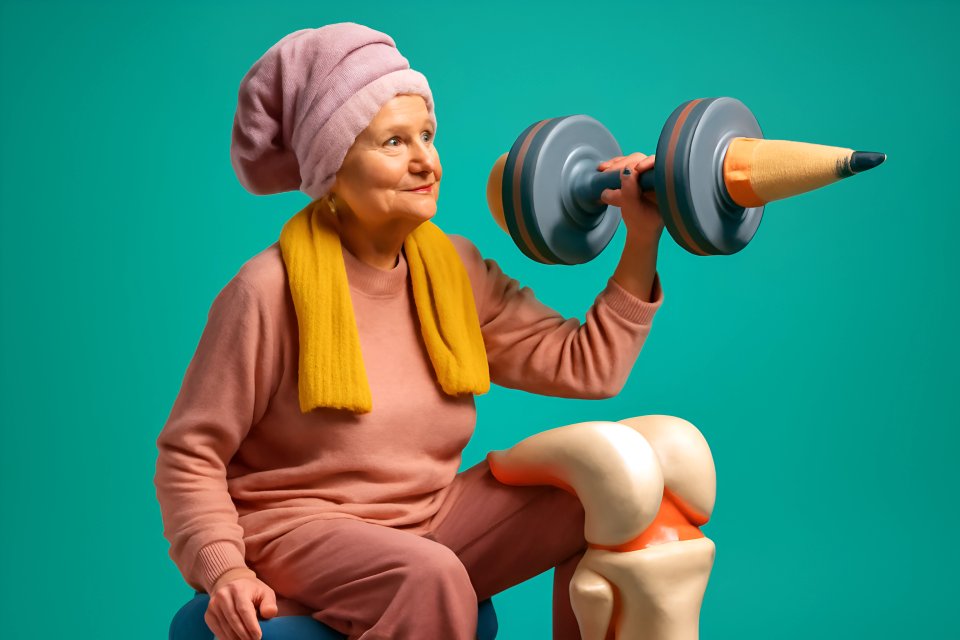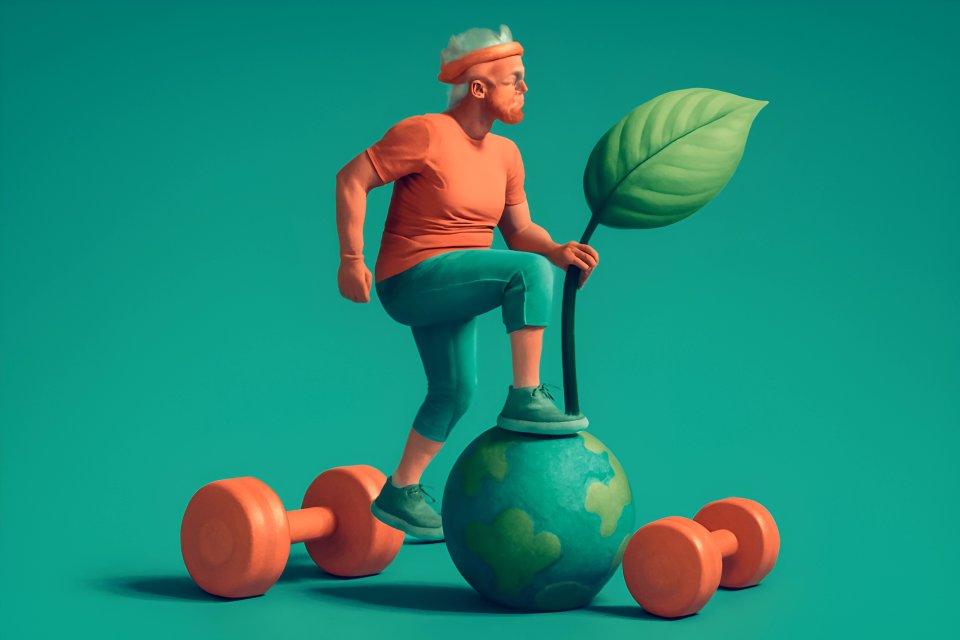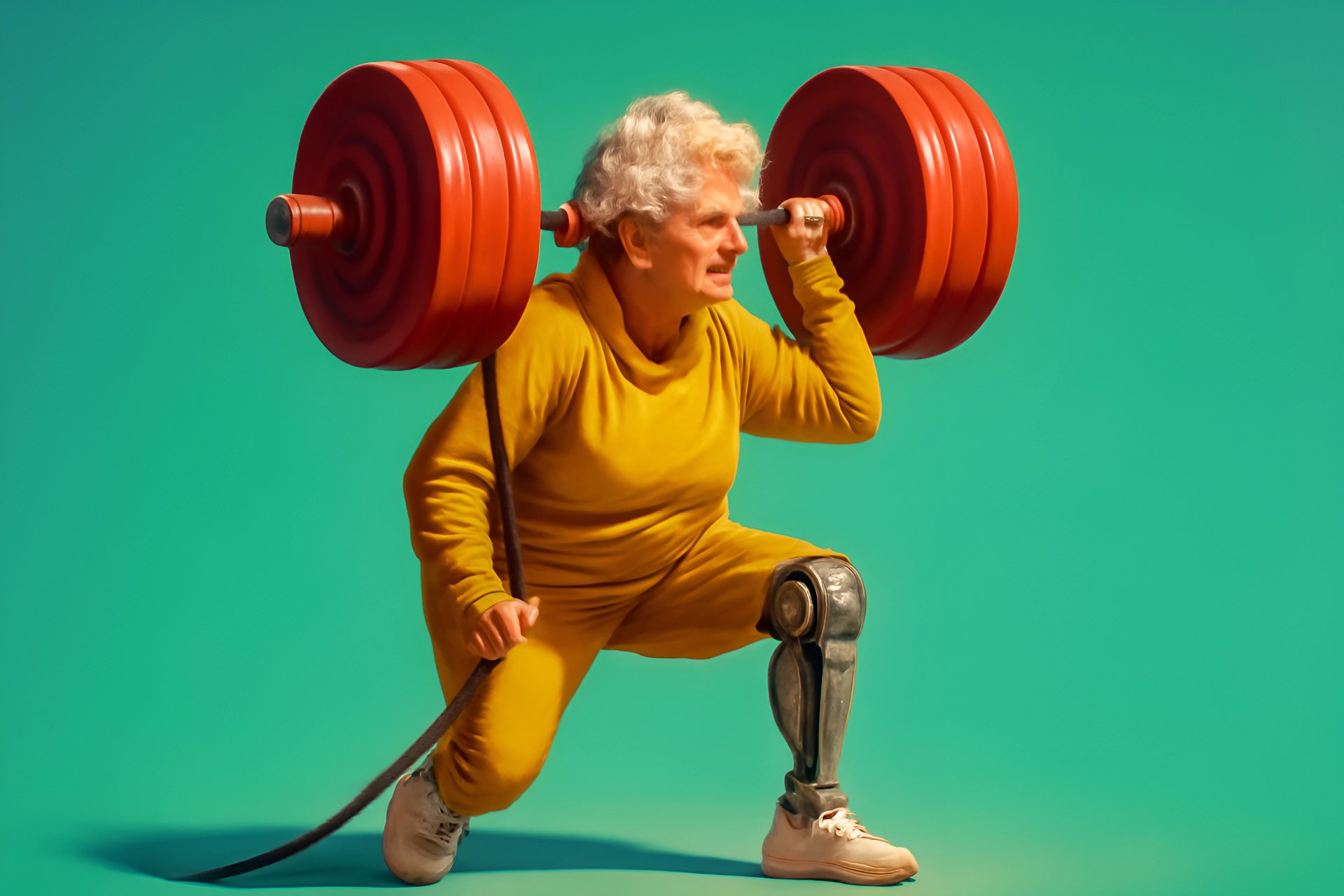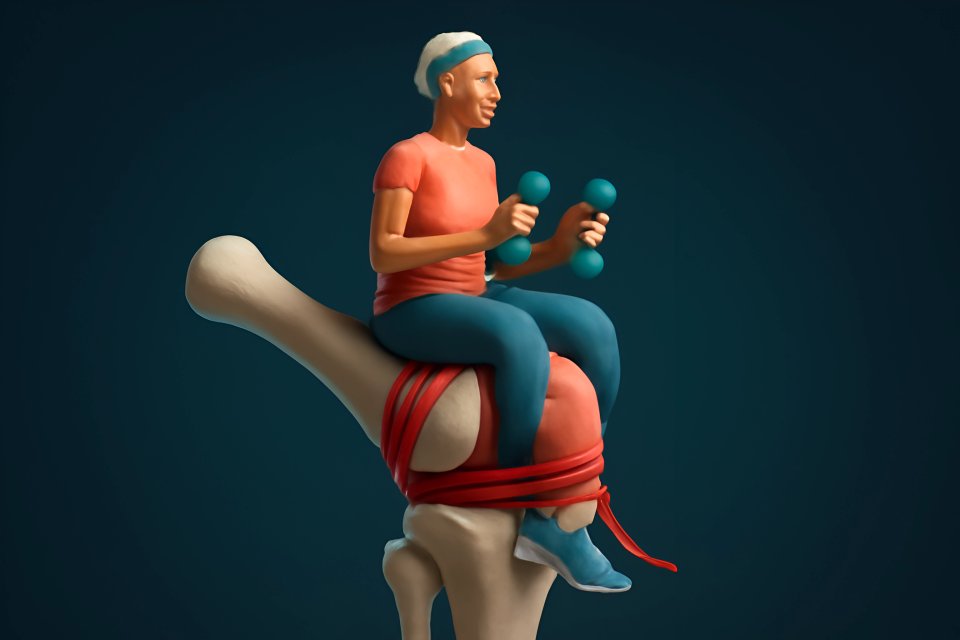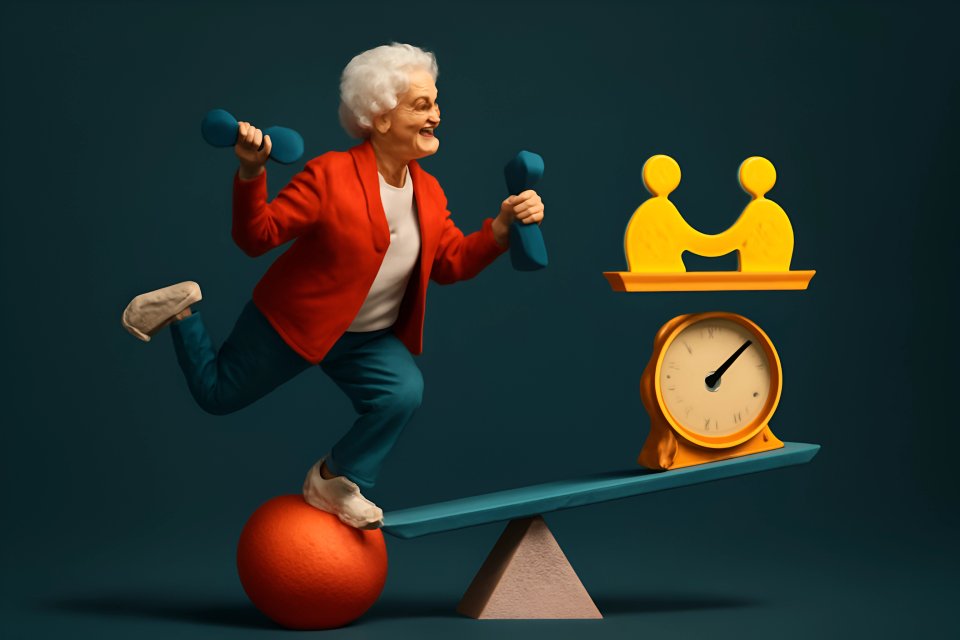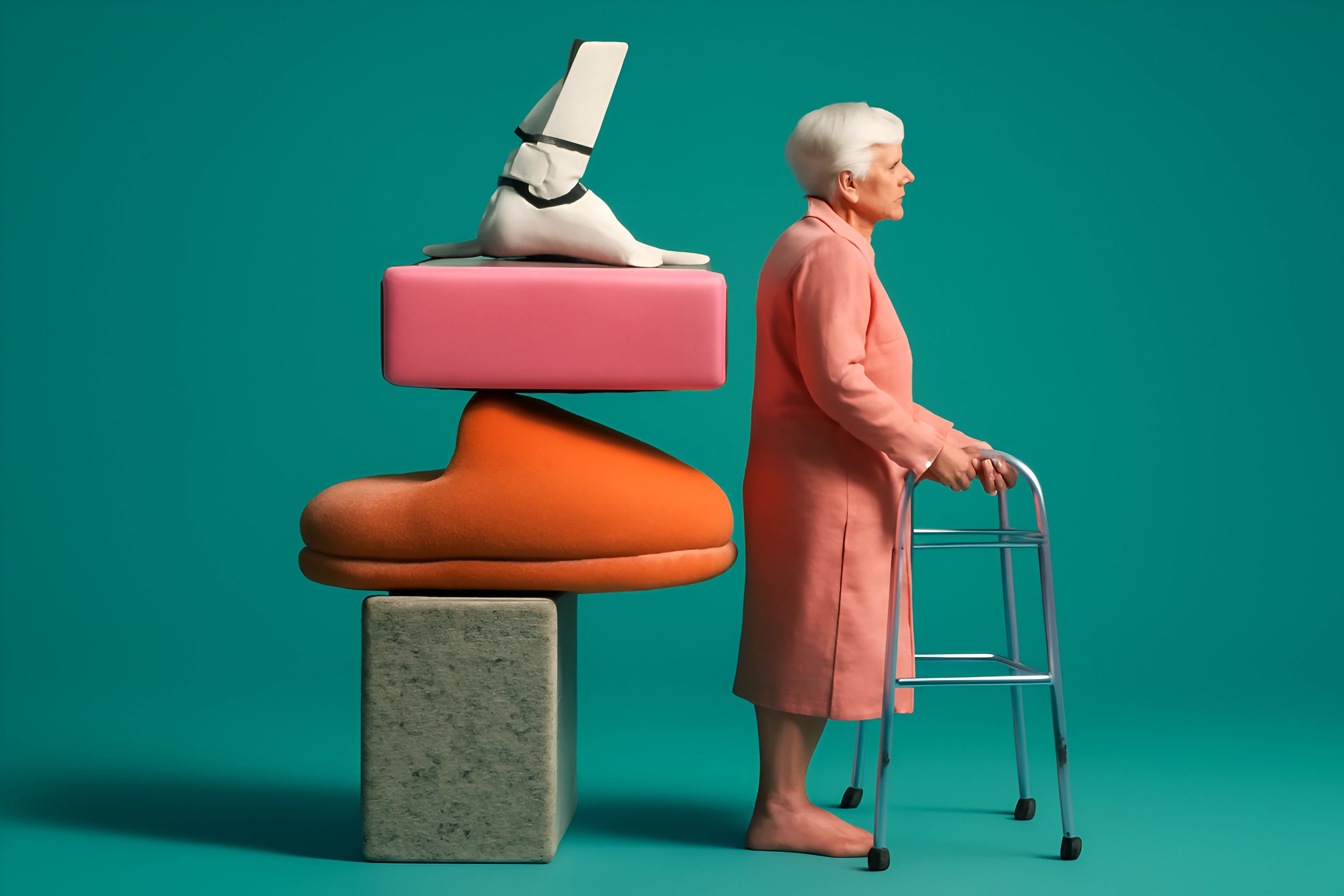
Stand Tall, Feel Stronger—It's Never Too Late
Ever catch your reflection in a shop window and notice you’re slouching more than you used to? Perhaps you feel that familiar, nagging ache in your upper back after an hour of reading or scrolling on your phone. You are not alone, and this is not a sign of defeat.
Life after 50 brings wisdom and experience, but it can also bring subtle changes to our bodies. Years spent at a desk, looking down at screens, or simply a natural decrease in muscle tone can lead our shoulders to round forward and our head to drift from its rightful place atop our spine. This isn't a personal failing; it's a common, and most importantly, correctable part of modern life.
The great news is that you hold the power to reclaim your alignment, banish discomfort, and stand taller with unshakable confidence. This post provides a simple, effective home mobility routine for posture improvement over 50, designed specifically for your body's needs. There is no complex equipment, no confusing jargon—just gentle, step-by-step movements you can begin today to feel stronger and more vibrant.
Why Better Posture is a Game-Changer After 50
Let's be clear: improving your posture is about so much more than just looking taller. It is a fundamental investment in your health, your independence, and your daily quality of life. A strong, aligned posture is your body’s natural architecture for peak performance, allowing everything to function as it should.
When your body is properly aligned, you dramatically reduce the chronic strain on your neck, shoulders, and back that leads to persistent aches and pains. Beyond pain relief, a stable, upright posture is a cornerstone of good balance, which is critical for preventing falls—a significant concern for adults over 50. In fact, improving balance and strength can prevent many of the 3 million emergency department visits for older adult falls each year.
Furthermore, standing tall gives your internal organs the physical space they need to work efficiently, which can lead to improved breathing and even better digestion. The benefits extend to your mindset, too. Carrying yourself with an upright, open posture can genuinely boost your energy levels and project a sense of confidence to the world and, more importantly, back to yourself. Committing to consistent senior posture exercises is an act of profound self-care that pays dividends in every aspect of your life.
Getting Started: Your Pre-Routine Checklist
Before you jump into any new movement practice, the most important rule is to honor your body and prioritize safety. This routine is designed to be gentle, but your personal well-being always comes first. Think of this as your foundation for success.
Your guiding principle should be the "no pain, no pain" rule. You may feel a gentle stretch or the sensation of muscles waking up, but you should never feel sharp, stabbing, or radiating pain. If you do, stop the movement immediately. It is also highly recommended that you consult with your doctor or a physical therapist before beginning, especially if you have pre-existing conditions like osteoporosis, arthritis, or a history of back injuries.
The best part about this routine is its simplicity. You don't need a fancy home gym. All you need is a small, comfortable space to move, a sturdy chair for support, and perhaps a yoga mat if you are comfortable getting on the floor. This accessibility ensures that nothing stands between you and a healthier, more aligned you.
The Step-by-Step Posture Alignment Routine
This routine is your blueprint for better alignment. It is broken into three essential parts: a gentle warm-up to awaken your muscles, the core alignment exercises to strengthen and realign, and a relaxing cool-down to lengthen and release tension. Aim to complete this mobility routine at home for older adults 3-4 times per week for the best results.
Part A: The 5-Minute Warm-Up (To Awaken Your Muscles)
Seated Cat-Cow
This movement gently mobilizes the spine, easing stiffness in your back.
- Sit tall at the edge of a sturdy chair, feet flat on the floor.
- Place your hands on your knees.
- Inhale as you arch your back, lifting your chest and looking slightly up (Cow).
- Exhale as you round your spine, tucking your chin to your chest (Cat).
- Repeat for 5-8 slow, controlled breaths.
Modification: For those comfortable on the floor, this can be performed on all fours, as demonstrated in many foundational yoga practices.
Shoulder Rolls
This simple move is perfect for releasing tension held in the neck and shoulders.
- Sit or stand tall.
- Inhale as you lift your shoulders up toward your ears.
- Exhale as you roll them back and down, squeezing your shoulder blades together.
- Repeat 5 times, then reverse the direction for 5 more rolls.
Neck Tilts (Side-to-Side)
Gently stretch the tight muscles along the sides of your neck.
- Sit or stand with a long spine.
- Slowly and gently tilt your right ear toward your right shoulder until you feel a light stretch.
- Hold for 15-20 seconds. Do not force it.
- Return to the center and repeat on the left side.
Part B: The Core Posture Alignment Exercises
Wall Angels
Why it works: This is a powerhouse for opening a tight chest and strengthening the upper back muscles that pull your shoulders into proper alignment.
- Stand with your back against a wall, feet about 6 inches away from it.
- Try to keep your tailbone, upper back, and head touching the wall.
- Bend your elbows to 90 degrees and raise your arms to shoulder height, pressing your forearms and the backs of your hands against the wall.
- Slowly slide your arms up the wall, keeping contact.
- Slide them back down to the starting position. Repeat 8-10 times.
Modification: If standing is difficult, perform the same arm movement while seated in a chair with your back pressed firmly against the chair back.
Chin Tucks
Why it works: This is the number one exercise to combat "tech neck" and retrain the muscles to hold your head correctly over your spine.
- Sit or stand tall, looking straight ahead.
- Gently place one finger on your chin.
- Without tilting your head down, draw your chin and head straight back, creating a "double chin."
- You should feel a stretch at the base of your skull.
- Hold for 3-5 seconds and release. Repeat 10 times.
Modification: The finger on the chin serves as a gentle guide to ensure the movement is straight back, not down.
Scapular Squeezes (Shoulder Blade Squeezes)
Why it works: This move directly activates and strengthens the rhomboid muscles between your shoulder blades, which are crucial for pulling your shoulders back.
- Sit or stand with your arms at your sides, palms facing forward.
- Keeping your shoulders down and relaxed, gently squeeze your shoulder blades together as if holding a pencil between them.
- Hold the squeeze for 5 seconds.
- Release and repeat 10-12 times.
Modification: This exercise is naturally low-impact and can be done anywhere, anytime—seated at a desk or standing in line.
Glute Bridges
Why it works: A weak posterior chain (glutes and hamstrings) often causes the pelvis to tilt, leading to slouching. Strengthening your body's foundation is key for upright posture.
- Lie on your back with your knees bent, feet flat on the floor hip-width apart.
- Place your arms by your sides, palms down.
- Squeeze your glutes and lift your hips off the floor until your body forms a straight line from your shoulders to your knees.
- Hold for 3 seconds, then slowly lower back down.
- Repeat 10-12 times.
Modification: For those who cannot get on the floor, a standing hip extension is a great alternative. Stand behind a chair for support, and slowly extend one leg straight back, squeezing the glute of that leg.
Thoracic Spine Rotations (Seated)
Why it works: This gentle twist improves mobility in your mid-back (thoracic spine), an area that often becomes stiff and rounded over time.
- Sit sideways in a chair, with your right side facing the chair back.
- Place both feet firmly on the floor.
- Gently twist your torso to the right, using your hands to hold the chair back for a light stretch.
- Hold for 20-30 seconds, breathing deeply.
- Turn and repeat on the other side.
Modification: The key is to reduce the range of motion to whatever feels comfortable and safe for your back.
Part C: The 5-Minute Cool-Down (To Lengthen and Relax)
Doorway Chest Stretch
This stretch is fantastic for opening up the pectoral muscles, which get tight from slouching and pull the shoulders forward.
- Stand in an open doorway.
- Place your forearms on the doorframe, with your elbows slightly below shoulder height.
- Step forward with one foot until you feel a gentle stretch across your chest.
- Hold for 30 seconds.
Child's Pose
A classic resting pose that provides a gentle, restorative stretch for your entire back.
- Kneel on the floor, then sit back on your heels.
- Hinge forward at your hips, resting your torso on your thighs.
- Extend your arms forward or rest them alongside your body.
- Rest your forehead on the floor and breathe deeply. Hold for 30-60 seconds.
Modification: If kneeling is uncomfortable, you can achieve a similar stretch by sitting in a chair and folding forward, letting your head and arms hang heavy toward the floor.
Making it a Habit: Your Weekly Posture Plan
The secret to lasting change isn't intensity; it's consistency. You don't need to spend hours a day to see and feel a difference. Aim to complete this full routine for about 15 minutes, 3-4 times a week. On your "off" days, even just doing the warm-up can help maintain mobility.
Remember, small, consistent efforts yield the most profound results. This philosophy is central to building a sustainable low-impact exercise routine that serves you for years to come. The goal is to integrate this into your life, not make it a chore.
Beyond the routine, try incorporating "Posture Check-ins" throughout your day. Set a reminder on your phone or use a daily activity—like waiting for the kettle to boil or stopping at a red light—as a cue. In that moment, take a deep breath, roll your shoulders back, and gently tuck your chin. These micro-adjustments retrain your body and mind to favor better alignment naturally.
Conclusion: Your Journey to a Taller, Healthier You
Improving your posture is an incredible act of self-care and a powerful statement that you are in control of your health and vitality. This simple routine is more than just a set of exercises; it's a tool to reduce pain, improve your balance, and boost your confidence from the inside out. You have the power to stand taller and feel stronger at any age.
By dedicating just a few minutes each day, you are making a direct investment in your long-term mobility, comfort, and independence. Embrace these posture alignment exercises for seniors and feel the incredible difference it makes to move through the world with strength and grace. You've earned it.
What's your biggest posture challenge? Do you have a favorite stretch that helps you feel more aligned? Share your thoughts in the comments below—we love to learn from our community!
Frequently Asked Questions (FAQ)
Q1: How long will it take to see improvements from this home mobility routine for posture?
Answer: While some people feel immediate relief from stiffness after the very first session, visible changes in posture take time and consistency. With regular practice (3-4 times per week), you may start to notice you're holding yourself taller and experiencing less discomfort within a few weeks. Lasting change is a marathon, not a sprint, so be patient and celebrate small victories along the way.
Q2: Can I do these exercises if I have osteoporosis or back pain?
Answer: This is a critical question. If you have osteoporosis, a history of spinal fractures, or chronic back pain, it is essential that you consult your doctor or a qualified physical therapist before starting this or any new exercise program. While gentle mobility can often be beneficial, certain movements may need to be modified or avoided to ensure your safety. Professional guidance is non-negotiable.
Q3: What if I can't get down on the floor for some exercises?
Answer: That is perfectly okay and very common. This routine was specifically designed with that in mind. Every exercise that is suggested on the floor, like the Glute Bridge and Child's Pose, includes a standing or seated modification. The goal of FitOverFifty is to make fitness accessible to everyone, regardless of current mobility levels. Always choose the version of the exercise that feels safest and most effective for your body.







